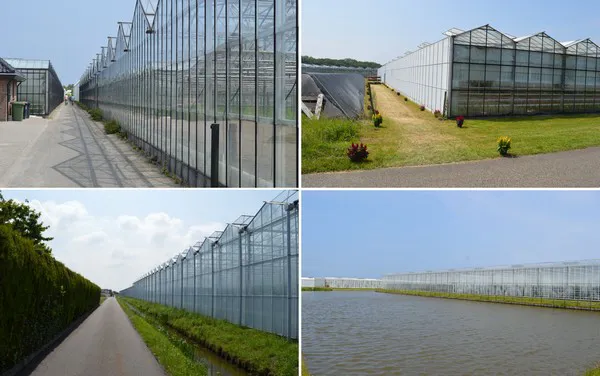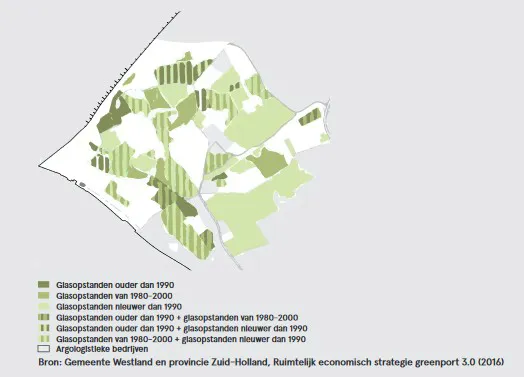The Westland has reached the limits of expansion. The famous Dutch greenhouse region, visible from space, is not likely to grow further, judging by a report published by the Westland municipality on the future of the area. The municipal government is looking to move away from bulk production, focus on reconstruction and enable the construction of new greenhouses by moving thousands of company homes.
Balancing act
The Westland's vision on the future, which is focused on the year 2030 and looks beyond that at 2040 as well, shows that there's a balancing act going on between ecological, economical and societal interests for the municipality.

No room
There's hardly any room to grow in the Westland. At the moment, the available greenhouse acreage is 4400 hectares gross, with 2253 hectares being actually used for cultivation in 2018. The remaining land is used for things like office buildings, water basins and company homes.
Restructuring or opportunities for niches and pioneers
The vision document also specifies the situation in several of the municipality's towns. Some greenhouse horticulture areas are less future-proof due to their location and age than others, as the map below shows.
With areas where greenhouse horticulture is more large-scale in nature, vegetable cultivation is most suitable. In areas with many concrete buildings or with uneven distribution of land, the Westland municipality sees more opportunities for ornamental cultivation, niche crops and pioneers and start-ups.

Map from the 'Watervisie' of the Delfland water board, showing the age of the glasshouses. Click here for a larger version.
Moving company homes
In the vision document, they refer to it as opportunities for reconstruction. Another way to create room is to move over a thousand company homes, which are currently in the way of restructuring, and they should be moved to village centers.
Moving away from bulk
One thing is clearly expressed in the vision document: the Westland mainly has a future if, with the limited availability of greenhouse space, it will focus on quality, niche cultivation, diversity, and focus less on bulk and selling/exporting at low prices. That's the way, the report argues, to be able to compete worldwide and remain a leading horticulture region.
Many growers have already moved in that direction - those who want to become really big, are mainly growing outside the Westland, in areas like Wieringermeer, or even outside the country in Europe or Africa.
The question is, however, if an (exclusive) focus on niches would make the Westland vulnerable instead of strong and resilient, bearing in mind how many (niche) products were thrown out during the corona pandemic.
